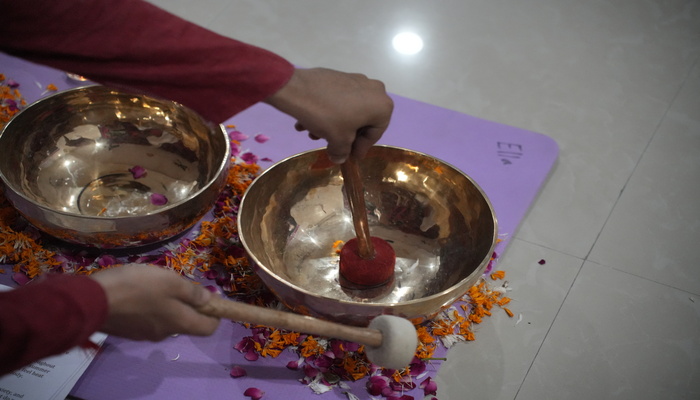Exploring The Temples Around Rishikesh, A Spiritual Journey
There’s a lot more to Rishikesh other than adventure activities, and that is, the legendary temples and renowned yoga schools. Rishikesh is home to numerous old temples and the following is the list of a few ancient temples along with their history and stories associated.
1. Neelkanth Mahadev Temple:
Neelkanth Mahadev temple is dedicated to lord Shiva and is one of the most revered Hindu sites. This temple is situated about 7km. from Swarga Ashram in the PauriGarhwal region. According to the Hindu mythology, it was this place, where lord Shiva consumed the poison that appeared after the ‘AmritManthan’ that turned his throat blue. Hence, the name NeelkanthMahadev.
2. Triambakeshwar Temple (Tera Manzil Temple):
This temple is also known as the Tera Manzila Mandir as it has 13 stories and is situated on the banks of the Ganges. This temple is also dedicated to lord Shiva and its main feature is that it could be seen from the Lakshman Jhula. Apart from its phenomenal architecture, it offers a wonderful view from the top story.
3. Shri Bharat Mandir:
This temple was founded in the 12th century by Adhiguru Shankaracharya and it has a very beautifully carved statue of lord Vishnu from the stone Saligram. Inside the canopy of the temple is where the Shree Yantra lies. The architecture of the temple is extremely detailed in the record of Kearkhand. The present structure was rebuilt after the original one was destroyed by Taimur.
4. Kunjapuri Temple:
This temple is considered one of the Shakti Peeths and is dedicated to the first wife of lord Shiva, Sati. It is believed that the chest part of Mata Sati had fallen here at this location as lord Shiva carried her corpse across the universe.
5. Raghunath Temple:
Raghunath Temple is a very sacred place for Hindus as this is the place where the famous Ganga Aarti takes place every evening. The deities worshipped here are primarily Ram and Sita and this temple is closely located to the sacred pond of Rishikund.
6. Hanuman Mandir:
The Hanuman Mandir is also one of the famous temples around here and Tuesdays are busy at this temple with numerous rituals and offerings that take place. Not to forget that the key highlight is the Ganga Aarti that is conducted here.
7. ShatrughnaMandir:
This temple was founded by Adi Shankaracharya and is dedicated to the younger brother of lord Ram, Shatrughna. This temple is located in the Ram Jhula and is of great historical significance.
8. Bhootnath Mandir
This temple is dedicated to Lord Shiva and is surrounded by Rajaji National Park from 3 sides and the Ganges from the other. It is believed that lord Shiva rested here on the journey to marry Mata Sati. This temple is located at an elevation hence providing a breathtaking view of the city.
9. Lakshman Temple:
This temple holds significance from the legend of Ramayana, as it is believed that it is this place where both Ram and Lakshman attained enlightenment. Some numerous ancient sculptures and paintings adorn the temple.
10. Swarg Ashram Temple:
This temple is located alongside the Ganges and is a 3 story temple that provides an absolutely stunning view of the valley. This is also one of the favourite tourist spots as it offers a sense of peace and serenity.
11. Parmarth Niketan:
This is the largest aashram of Rishikesh has more than 1000 rooms and provides a spiritually captivating environment for people all across the globe who visit the city. The daily activities of the ashram include yoga sessions, hatha yoga, vinyasa etc..it’s the best place to be for someone who seeks holistic experience.
These shrines and their stories contribute to the richness of the culture and spirituality of Rishikesh, attracting tourists across the globe to explore their greatness and find solace in the sacred landscape. These temples not only are a haven for the spiritual seekers but also portray the roots of tradition and legends of Rishikesh.











